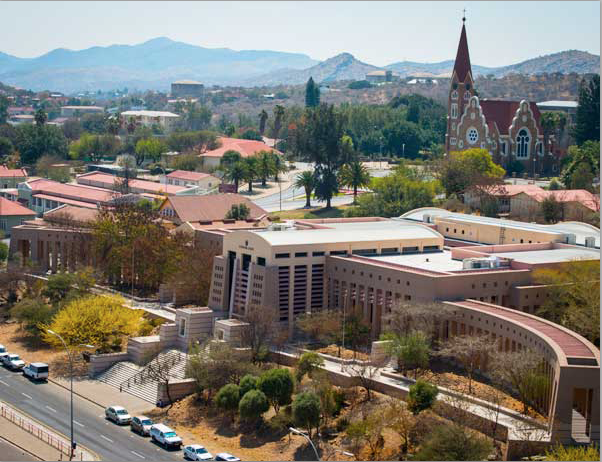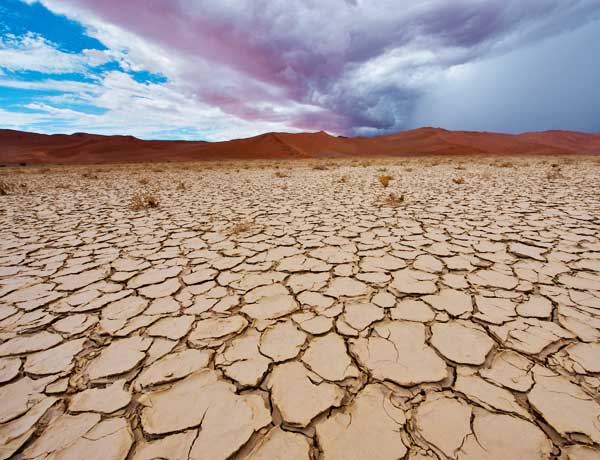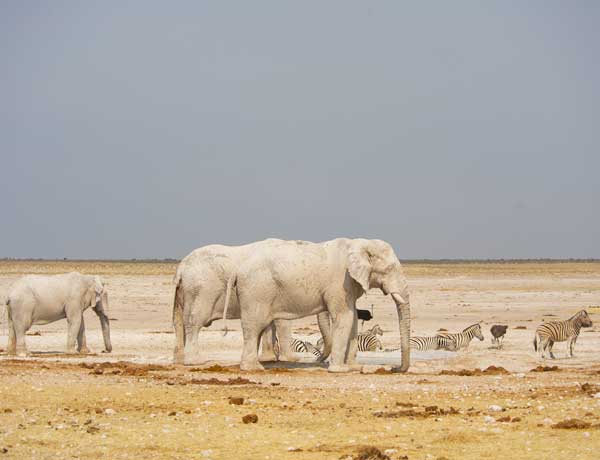Namibia, officially the Republic of Namibia, is a country in southern Africa whose western border is the Atlantic Ocean. It shares land borders with Angola and Zambia to the north, Botswana to the east and South Africa to the south and east. The name of the country is derived from the Namib Desert, considered to be the oldest desert in the world. It is the second least densely populated country in the world.

GENERAL
Capital city: Windhoek
Independence: 21 March 1990
Current president: Hage Geingob
Multiparty parliament
Nine political parties are represented in the National Assembly, the lower chamber of parliament
Democratic constitution
Division of power between executive, legislature and judiciary
Secular state, freedom of religion (90% Christian)
Freedom of press/media
Namibia is divided into 14 regions
POPULATION
2.3 million
Density: 400 000 inhabitants in Windhoek (15% of total)
Official Language: English
14 regions, 13 ethnic cultures, 16 languages and dialects
Adult literacy rate: 85%
Population growth rate: 2.6%
Educational institutions: over 1700 schools, various vocational and tertiary institutions
TIME ZONES
Summer time: GMT + 2 hours from the first Sunday in September to the 1st Sunday in April.
Winter time: GMT + 1 hour away from the first Sunday in April to the 1st Sunday in September.


ENVIRONMENT
Nature reserves: 15% of surface area
Highest mountain: Brandberg
Other prominent mountains: Spitzkoppe, Moltkeblick, Gamsberg
Weather: Namibia has more than 300 days of sunshine per year with generally dry winters (June – August). Rainy season is usually between February and April.
Perennial rivers: Orange, Kunene, Okavango, Zambezi and Kwando/Linyanti/Chobe
Ephemeral rivers: Numerous, including Fish, Kuiseb, Swakop and Ugab
MONEY MATTERS
Currency: The Namibia Dollar (N$) is fixed to and on par with the SA Rand.
Foreign currency, international Visa, MasterCard, American Express and Diners Club credit cards are accepted.
ECONOMY
Main sectors: Mining, fishing, tourism & agriculture
Biggest employer: Agriculture (46%)
Fastest growing sector: Tourism
Tourism: Despite the remote nature of much of the country, Namibia has seaports, airports, highways and railways. Namibia generally attracts eco-tourists with the majority visiting to experience the different climates and natural geographical landscapes such as the great eastern desert and plains. There are many lodges and reserves to accommodate eco-tourists. The most visited places include the Caprivi Strip, Fish River Canyon, Sossusvlei, the Skeleton Coast Park, Sesriem, the coastal towns of Lüderitz, Walvis Bay and Swakopmund as well as Etosha National Park.
Mining: Diamonds, uranium, copper, lead, zinc, magnesium, cadmium, arsenic, pyrites, silver, gold, lithium minerals, dimension stones (granite, marble, blue sodalite) and many semi-precious stones


FAUNA
Namibia’s abundant wildlife is arguably its greatest tourist asset.
Big game: Elephant, lion, rhino, buffalo, cheetah, leopard, giraffe
20 antelope species
240 mammal species (14 endemic)
250 reptile species
50 frog species
676 bird species
Endemic birds including Herero chat, rockrunner, Damara tern, Monteiro’s hornbill
Namibia hosts a wealth of small mammals, including mongoose and jackal; the less common, solitary and nocturnal aardvark; and the honey badger
Endangered mammals are wild dog, cheetah, black rhino, lion, puku, oribi and waterbuck
For the latest travel & tourism news or to learn more about Namibia visit Travel News Namibia.

